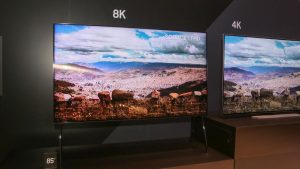Should we Switch to 8K TVs?
 After the recent release of 4K TVs, leading electronic manufacturers are now embarked on the next generation of TV technology: 8K. This was made known at the IFA consumer electronics show hosted in Berlin, Germany when Samsung and LG unveiled their 8K TVs claiming that it is the future of TV markets.
After the recent release of 4K TVs, leading electronic manufacturers are now embarked on the next generation of TV technology: 8K. This was made known at the IFA consumer electronics show hosted in Berlin, Germany when Samsung and LG unveiled their 8K TVs claiming that it is the future of TV markets.
What is 8K?
8K essentially defines the resolution of a TV’s display. As much as the visual clarity offered by most 4K TVs today might seem sufficient, 8K raises the bar even higher. In a nutshell, 8K TVs offer four times as many pixels as those in 4K TVs. This has the effect of making images clearer and sharper, especially on larger screen sizes.
Do We Need 8K?
4K technologies used today are satisfactory to a large extent. As much as we might not see the need for 8K especially after 4K has gone mainstream, TV manufacturers have every reason to believe 8K will be needed in the next few years.
8K technology means that consumers have an opportunity to enjoy crisp-clear images on bigger screens. The average 8K screen size is expected to be around 65-inches, and the 80-inch + TV sets will soon be a standard feature in most households and commercial establishments.
The Cost of 8K Technology
8K is a new technology, and like most new technologies, one of the major stumbling blocks for its adoption could be the hefty price tag. The cost of 8K TVs might limit the size of the audience at the beginning but will surely come down in the future.
The ability to give consumers 8K could be a point of concern at the moment. This also happened with 4K, but some developments to accommodate this technology are underway. For instance, broadband providers must be keen to provide larger bandwidths and higher internet speeds.
